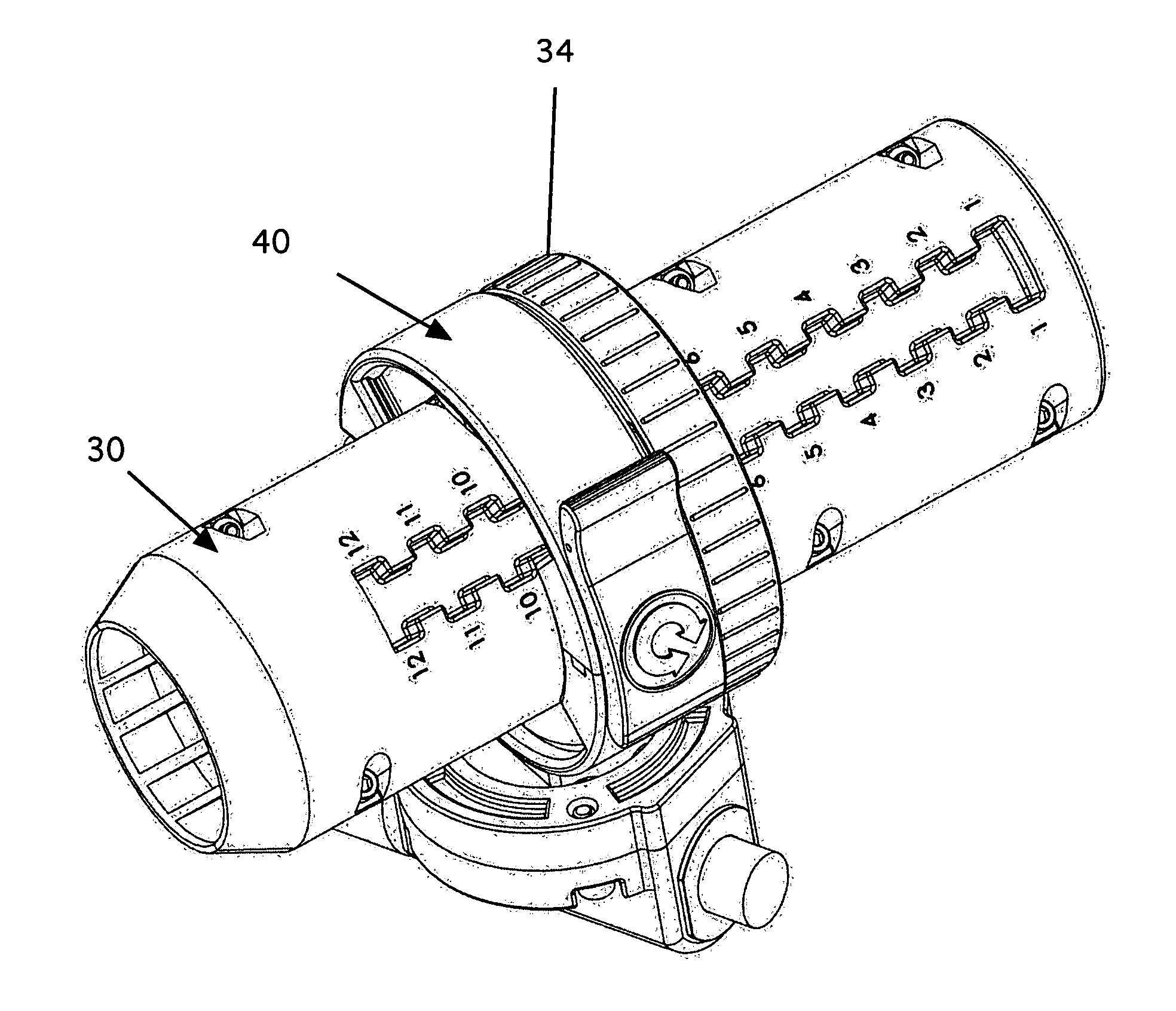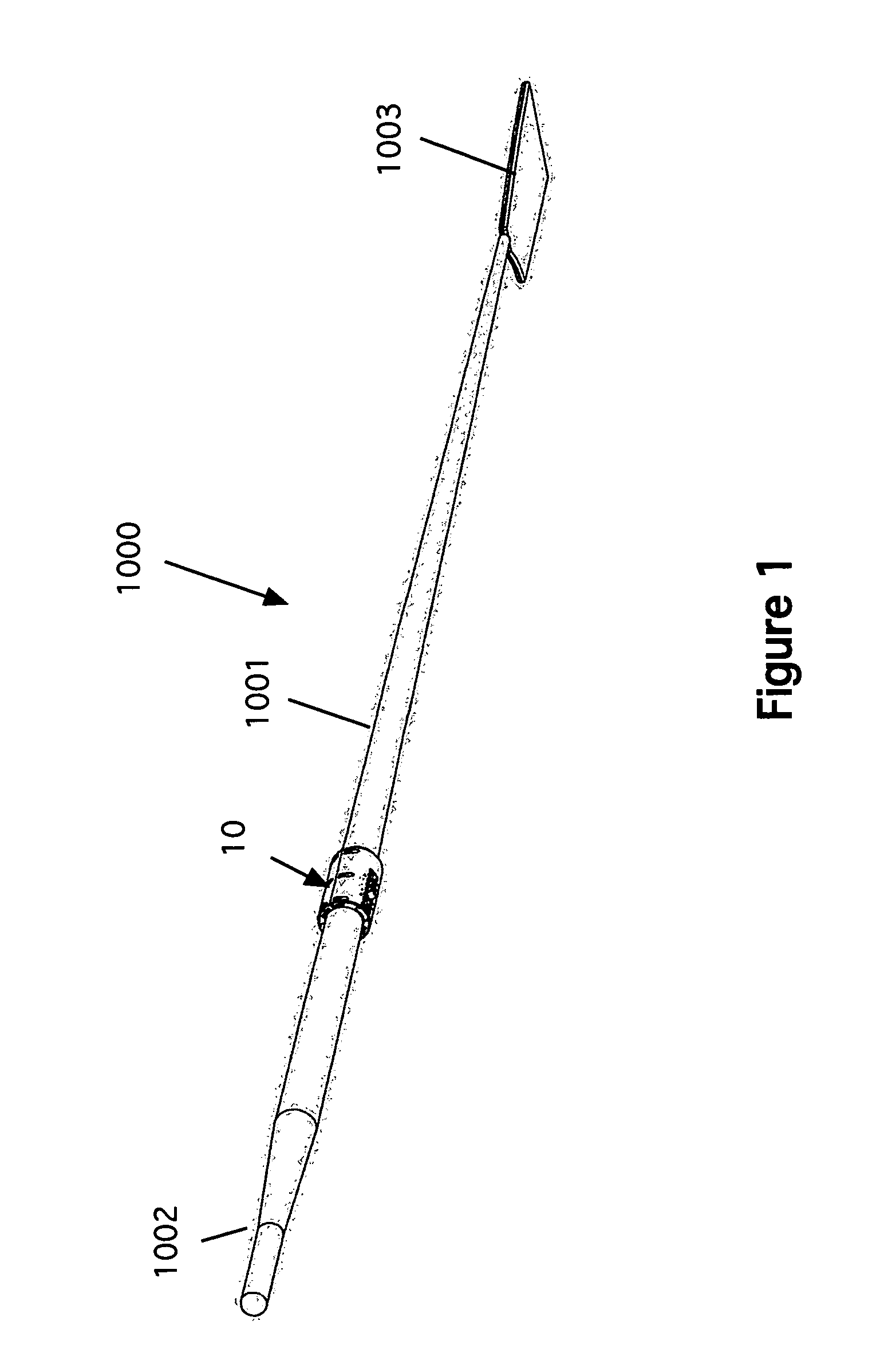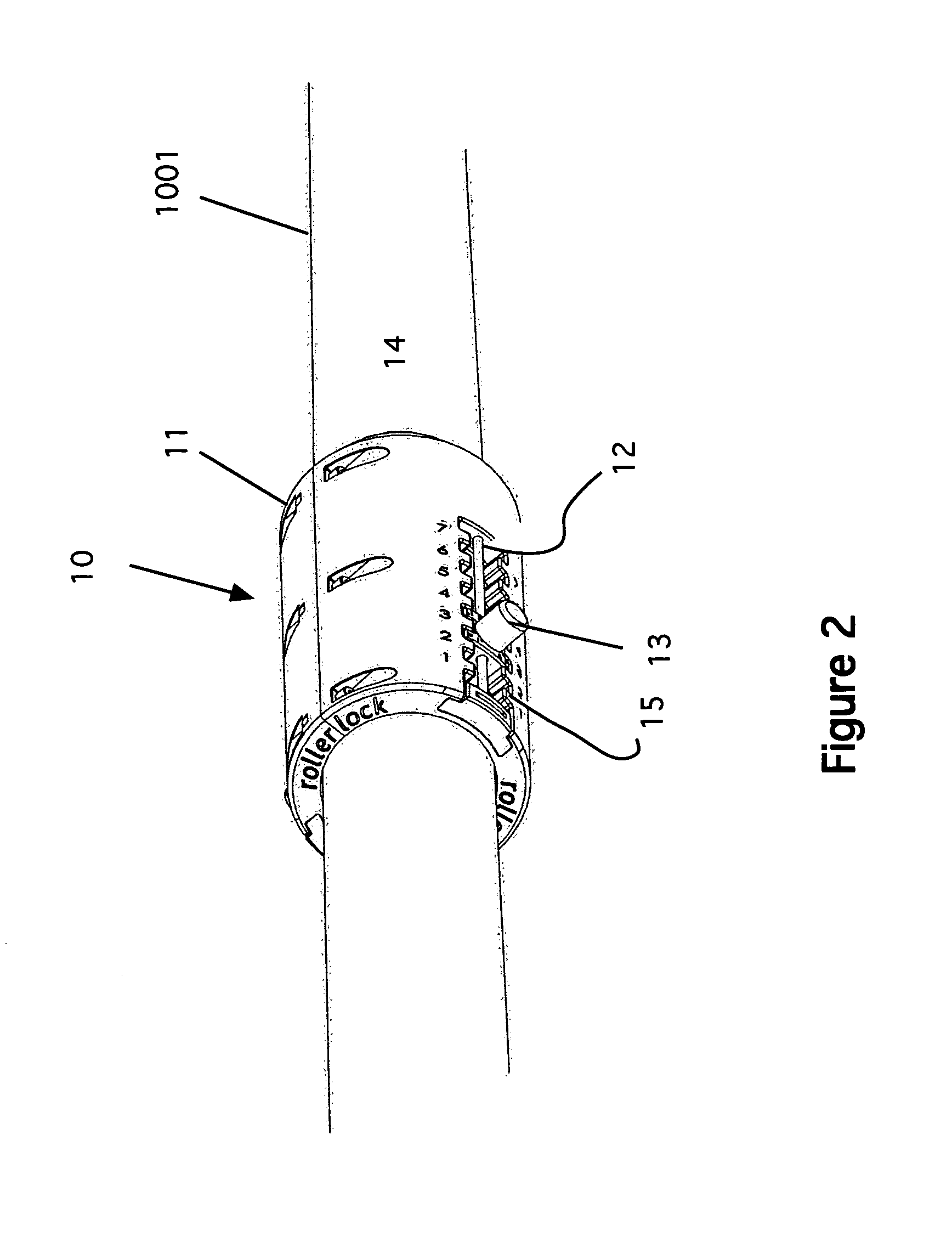Oarlock system
a technology of oarlocks and sleeve, which is applied in the field of oarlocks, can solve the problems of oarlocks that don't give the rower a strong connection with the shell, uneven wear of both sleeves, and loss of valuable time, so as to prevent inadvertent separation of the oar. , the effect of improving the rowing geometry
- Summary
- Abstract
- Description
- Claims
- Application Information
AI Technical Summary
Benefits of technology
Problems solved by technology
Method used
Image
Examples
first embodiment
[0077]Referring now to the drawing figures, FIG. 1 is a perspective view of the sleeve portion of the invention installed on an oar.
[0078]The oar 1000 has a shaft 1001, a handle 1002 and a blade 1003. The figure shows a sleeve 10 secured to the shaft of the oar. The sleeve is secured by screws (see, e.g. FIGS. 2 and 3). The operation of the sleeve 10 and its relation to other components are discussed below.
[0079]FIG. 2 is a detail view of a first embodiment of the sleeve and oar assembled. Here, details of the first embodiment sleeve 10 are shown. The sleeve is a formed member that has recesses for fasteners 11 to pass through to hold the sleeve together on the oar shaft 1001. The sleeve provides the critical interface between the oar shaft and the oarlock. Its diameter is just slightly smaller than the oar retainer diameter (discussed below), thereby assuring connection without free play.
[0080]In all embodiments, the sleeve incorporates a longitudinal adjustment channel along its e...
third embodiment
[0086]FIG. 7 is a rear perspective detail of the sleeve and lock of a In the alternate embodiment, the sleeve 30 has two sides as before, secured with fasteners 31. A channel 32 is formed as before with teeth 33. A locking ring (retainer ring) 34 is employed to hold the arrow-shaped blocks 35 in place. This can be considered as a means for temporarily fixing said cam block in a position, as described below. The knurled ring 34 has an inside edge 34a that acts as a tongue and interfaces with a groove 35a in the top of the blocks. (See FIG. 9). When twisted 90 degrees clockwise, the inside edge of the ring gradually tightens on the block 35 because it is slightly out of round and locks the blocks into position. The ring can be removed with a 90-degree twist counter clockwise. Note that with this embodiment, the ring 34 is used to lock both blocks at the same time.
[0087]FIG. 8 is a front detail view of the sleeve and lock of the third embodiment, assembled. In this view, the locking r...
second embodiment
[0105]FIG. 21 is a detail view of the bottom portion of the bottom-only dock of the second embodiment, assembled. FIG. 22 is an exploded detail view of the bottom —only dock. As clearly shown in these two figures, this dock 60 is a curved member having a top, a bottom and a fastener for pivotably securing said oar retainer to the top of said curved member. As before, this embodiment of the dock is secured to the oar retainer using the pivot bolt 60a pivot flat washer 61b, pivot split lock washer 61c, pivot lock nut 51d, and a cover 61e. The entire assembly of the dock 60, the pivot bolt 60a, pivot flat washer 61b, pivot split lock washer 61c, pivot lock nut 51d, and a cover 61e, is considered to be a means for pivotably securing the oar retainer to the top of the dock 60 curved member. The dock is mounted to the rigger via the bottom rigger-mounting bolt 62. A bushing 63 and washer 64 are also used as shown. All of these are considered to be a fastener means for securing the dock 60...
PUM
 Login to View More
Login to View More Abstract
Description
Claims
Application Information
 Login to View More
Login to View More - R&D
- Intellectual Property
- Life Sciences
- Materials
- Tech Scout
- Unparalleled Data Quality
- Higher Quality Content
- 60% Fewer Hallucinations
Browse by: Latest US Patents, China's latest patents, Technical Efficacy Thesaurus, Application Domain, Technology Topic, Popular Technical Reports.
© 2025 PatSnap. All rights reserved.Legal|Privacy policy|Modern Slavery Act Transparency Statement|Sitemap|About US| Contact US: help@patsnap.com



